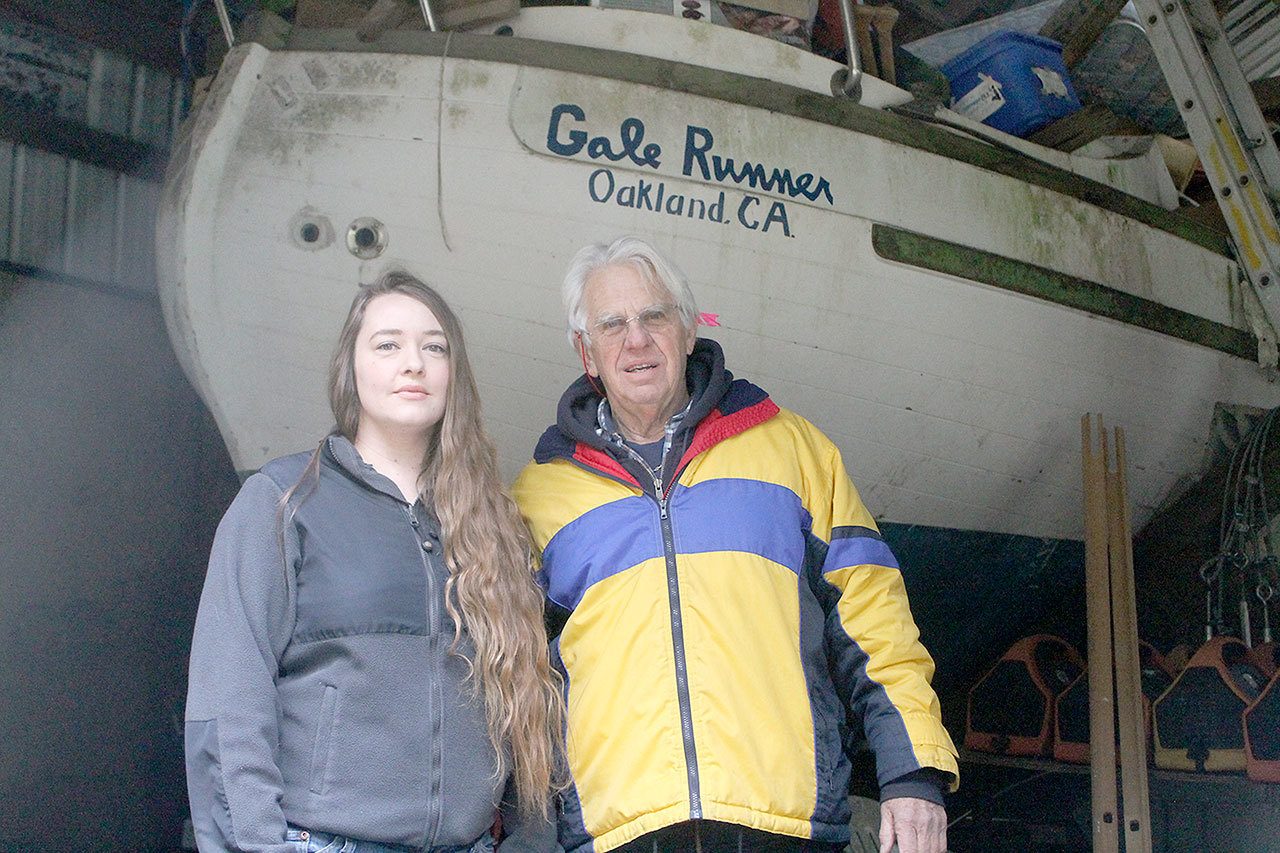A Clinton man has come into possession of a piece of maritime history.
And it gives him the heebie jeebies.
In a barn on land recently purchased by Erik Rohde was the Gale Runner, a 31-foot sailboat from Oakland, Calif., that is linked to the deaths of U.S. Coast Guardsmen 20 years ago near La Push. On Feb. 12, 1997, four crewmen of Coast Guard Station Quillayute River — Petty Officer David Bosley, Petty Officer Third Class Matthew Schlimme, Seaman Clinton Miniken and Seaman Apprentice Benjamin Wingo — responded to a distress call by the Gale Runner, which was battling through a violent storm.
But the crewmen’s 44-foot lifeboat rolled several times en route to the Gale Runner and eventually capsized. Only Wingo, a 19-year-old at the time, survived.
The Gale Runner’s two occupants were later rescued by a Coast Guard helicopter as the boat collided with rocks. Bosley, Schlimme, and Miniken were the first coastguardsmen to be killed by a capsized lifeboat in more than 30 years, according to a New York Times story from February 16, 1997. A book about the incident was later written by Dennis Noble, a former Coast Guardsman.
Rohde, an avid sailor who takes his family out to sea often, was unaware of the boat’s history after purchasing the property from Clinton resident Bill Rowland. The boat was not particularly attractive upon first glance — it was dismasted the night of the incident and has been used to contain storage for years. It also had a large hole in its side when looters took away its engine after it came ashore, Rowland said.
Rowland had mentioned to Rohde that the Gale Runner had “quite a history,” so Rohde did a quick Google search while he had a spare moment at work on Wednesday morning. His findings were shocking, he said.
“It’s spooky,” Rohde said.
Rowland said he too was unaware of the Gale Runner’s past when he purchased it at an auction in Woodinville until a news reporter approached Rowland and informed him of its history. Rowland later contacted Noble and told him that he was in possession of the boat, which came as a “real shock and surprise” to Noble.
“I had no idea it was still around,” Noble said. “…I never knew what happened to the boat.”
Noble was present at the station during the incident; he was working on a book about small boat Coast Guard stations when he heard the Gale Runner’s call for help over the radio.
“That was the hardest, most emotional book I’ve ever done,” said Noble, who has written 16 other books and spent 21 years with the Coast Guard. “I was there when it happened. I talked to two of the people who died one hour before they died. I was listening to everything.”
Rohde said having the Gale Runner is a bit eerie. Like most other sailors, Rohde does not like to tempt fate with strange phenomena that happen at sea. Making things all the more unsettling is the fact that his oldest son, Rohme, is hoping to become a rescue swimmer with the Coast Guard.
“It seems like bad karma,” Rohde said.
Rohde said he has no use for the boat and has no wish to profit from a sale. He said he was interested in finding a good home for the Gale Runner to respect its maritime history. He thought the Coast Guard may be interested in using it as a memorial, and he was also interested in following Noble’s advice to donate it to the U.S. Coast Guard Auxiliary, the volunteer branch of the Coast Guard.
Senior Chief Boatswain’s Mate Cory Wadley, Coast Guard Station Quillayute River’s officer in-charge on Friday morning, said that while the sailboat is a significant piece of Coast Guard history, the station would not be interested in memorializing the Gale Runner due to sensitivity issues with the deceaseds’ families. Wadley agreed with Noble’s idea to donate it the Coast Guard Auxiliary.
Wadley said the station holds a memorial each year on Feb. 12; the upcoming event will mark the 20th anniversary of the incident. Wingo, who still serves in the Coast Guard, will be in attendance.



